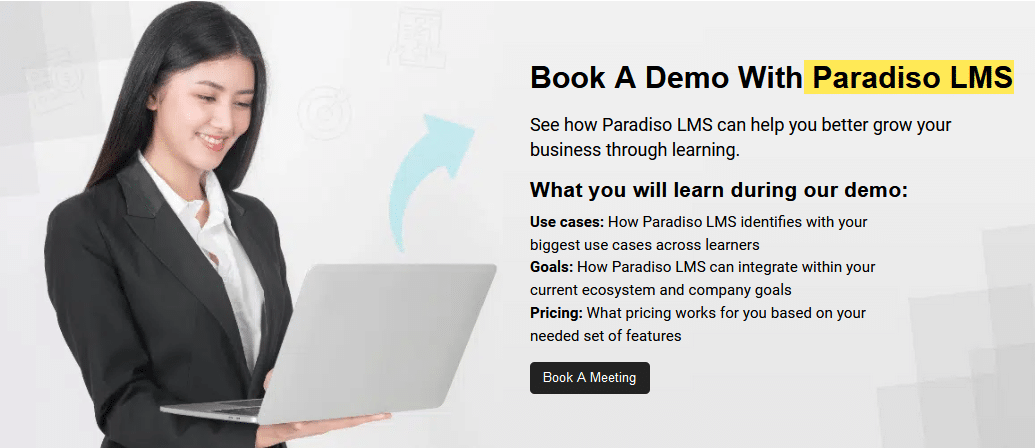Staying competitive means continuously upskilling your workforce. However, conventional training methods often struggle with effectiveness, scale, and interaction. This is where Learning Management Systems (LMS) come into the picture — tools for digital transformation that change how companies view employee training. However, with so many choices ranging from budget to premium rates, how do you find the right LMS option for your needs?
High and Low Cost of Learning Management Software

This guide explores the highs and lows of LMS software costs, offering granular pricing details per price range so you can make an informed decision that delivers on your investment best.
What is LMS Software?
A learning management system (LMS) is a digital instruction, planning, and content analysis platform. This powerful solution automates training, improves learning experiences, and promotes standard knowledge transfer throughout your organization. Whether you’re bringing new hires up to speed, upgrading skills within your team, or meeting compliance requirements, an LMS can handle it all efficiently.
Why use a learning management system within your business?
The use of an LMS can significantly improve your training approach. So, here are three up-to-date detailed reasons why:
1. Automated Personalization
AI is helping LMS to create a personalized learning adaptive curriculum. A machine learning LMS can ensure that suitable courses and resources reach individual learners (either by pushing them exactly when needed or pulling in a manual way) after grasping the learner’s learning style, speed, and career-growth trajectory developed through utilization data like preferences for materials consumed, etc. This helps get real-time, contextual training that will connect with the user for high engagement and knowledge retention.
2. Microlearning
The days of long, tedious training sessions are over. Microlearning is a solution where small parts of learning are chunked together, making it easier for employees to consume or put into practice immediately. Doing so allows for just-in-time training, enabling employees to dip in and out as they require specific information or areas of support, reinforcing practical application and resolution.
3. Interactive and Immersive Learning
Virtual Reality (AR) and Augmented Fact Computers have changed learning over the past years. This technique provides more practical and useful experience in areas of the training syllabus that are not easy or too risky to learn with live implications, like mechanical repairs, medical treatments, or sales interactions. It reinforces what is learned and retained.
4. Engage with Gamification
Use points, badges, and leaderboards to encourage your employees. These are the features that give it a gaming feel and make learning fun. Through gamification-motivated- success is empowered through meaningful progress at all stages, urging further learning and enhancement.
5. Mobile Optimized
Any blended or peer-to-peer learning automatically implies that LMS also needs mobile optimization. This enables employees to view the training materials no matter where they are—on their way to work, during travel, or while working from home. With the LMS mobile optimized, learning can be done anytime, anywhere: on the go and without disrupting current workflows and processes.
6. Advanced Analytics
Drive detailed insights into learner behavior, course effectiveness, and the overall impact of your training programs with our advanced analytics. Predictive analytics predict skill shortages that are weeks away from becoming business issues, enabling proactive modifications in training strategies. Rich reporting ensures valuable insight into ROI and informs you on how to always take one more step in the better direction of your learning journeys.
7. Social Learning
Promote social learning with features such as forums, peer reviews, and group projects. These abilities can help create a learning culture in your organization, allowing employees to share knowledge and support one another as they embark on their own learning paths. A complementary aspect of this is that social learning aids knowledge transfer and increases teamwork and collaboration amongst internal teams.
Insider Tips To Choose The Perfect Learning Management System
Download now to get insider tips on choosing the perfect Learning Management System!

7 Benefits of a Learning Management System
Centralized Learning Hub
An LMS is not only a repository for your training content but also integrates with other enterprise systems to offer end-to-end tracking of an employee’s performance, compliance, and career progression. All can be managed via an efficient learning hub, supporting strategic decision-making and tailoring career development plans.
Personalized Learning Paths
Using AI, LMS platforms can create learning paths that adjust based on real-time performance data. This means that the system will keep adapting based on how well or poorly a learner like me is progressing, and it provides more targeted support for challenging things.
Automatic Compliance Monitoring
Modern LMS could follow different compliance policies and predict whether non-compliance will happen, hence addressing the same before it becomes too late. It also ensures compliance through automated certification and recertification processes.
Interactive Content
Advanced multimedia—interactive simulations, scenario-based learning, and virtual labs—apply theoretical knowledge to practical skills. This interactive creation mirrors actual situations, therefore also offering a hands-on encounter, albeit in a secure and managed setup.
Anytime, Anywhere Learning
Modern LMSs offer offline learning support. Learners can save content on their devices and learn without an internet connection. Upon going online again, the system synchronizes their progress and provides an uninterrupted learning experience.
New System Integration
Integrating the LMS with other enterprise systems like CRM and ERP provides a more comprehensive view of employee performance. Sales teams can integrate their LMS with CRM to receive training modules on the go based on real-time sales data, performance metrics, etc. This will create more focused, compelling learning experiences for them as end users.
Continuous Improvement
Most modern LMS platforms also include learner feedback surveys and sentiment analysis features. This feedback loop exposes consistently refined, iterative touchpoints for organizations to continually hone and enhance their training programs based on learners’ direct input.
High-Cost LMS Systems
1. Cornerstone OnDemand
Known for its robust feature set and scalability, Cornerstone OnDemand offers extensive customization and integration options. It’s ideal for large enterprises that need a comprehensive LMS with advanced capabilities. While the LMS cost might be higher, the investment pays off with extensive features and scalability.
2. Talent LMS
This platform is praised for its intuitive interface and flexibility. It offers many features, including course creation, gamification, and reporting. It’s a great choice for businesses looking for a powerful yet user-friendly LMS, though the LMS cost is on the higher end.
3. LRN
LRN focuses on compliance and ethics training. It provides specialized content and tools to ensure organizations meet regulatory standards. Its high LMS cost reflects its focus on delivering tailored, high-quality compliance training solutions.
Low Cost LMS Systems
1. Paradiso LMS
Offering a balanced mix of features and affordability, Paradiso LMS is perfect for small to mid-sized businesses. It supports integration with various platforms, provides extensive customization options, and offers strong customer support. The LMS cost for Paradiso is competitive, providing a rich feature set without a hefty price tag.
Insider Tips To Choose The Perfect Learning Management System
Download now to get insider tips on choosing the perfect Learning Management System!

2. Blackboard
Traditionally known for its use in educational institutions, it has made significant strides in corporate training. It provides essential LMS features at a lower LMS cost, making it accessible for smaller organizations.
3. Absorb LMS
Absorb LMS is user-friendly and offers a good range of features at a competitive LMS cost. It suits businesses looking for a straightforward LMS without the high price tag.
Value for Money Choosing Paradiso LMS
When it comes to balancing cost and features, Paradiso LMS stands out as a clear winner. It’s a comprehensive solution that meets all business needs without demanding high-end costs.
While not free, Paradiso LMS includes many features that are typically found in more expensive solutions. It offers robust course management, full gamification, and excellent mobile access. This means your training programs are not only effective but also enjoyable and accessible.
Unlike rigid, one-size-fits-all platforms, Paradiso LMS is highly customizable to meet your specific requirements. Whether you need it to integrate with your HR software or customize the course design, Paradiso LMS is flexible enough to adapt.
Now, let’s talk about LMS cost. Paradiso LMS provides a packed feature set without the premium price tag. It is reasonably priced yet feature-rich. The cost is low considering all it offers, making it an excellent choice for any company looking to maximize its investment without compromising on quality. Paradiso LMS delivers full course management functionalities, gamification options, and mobile learning support, all at a price that is affordable for organizations of all sizes.












